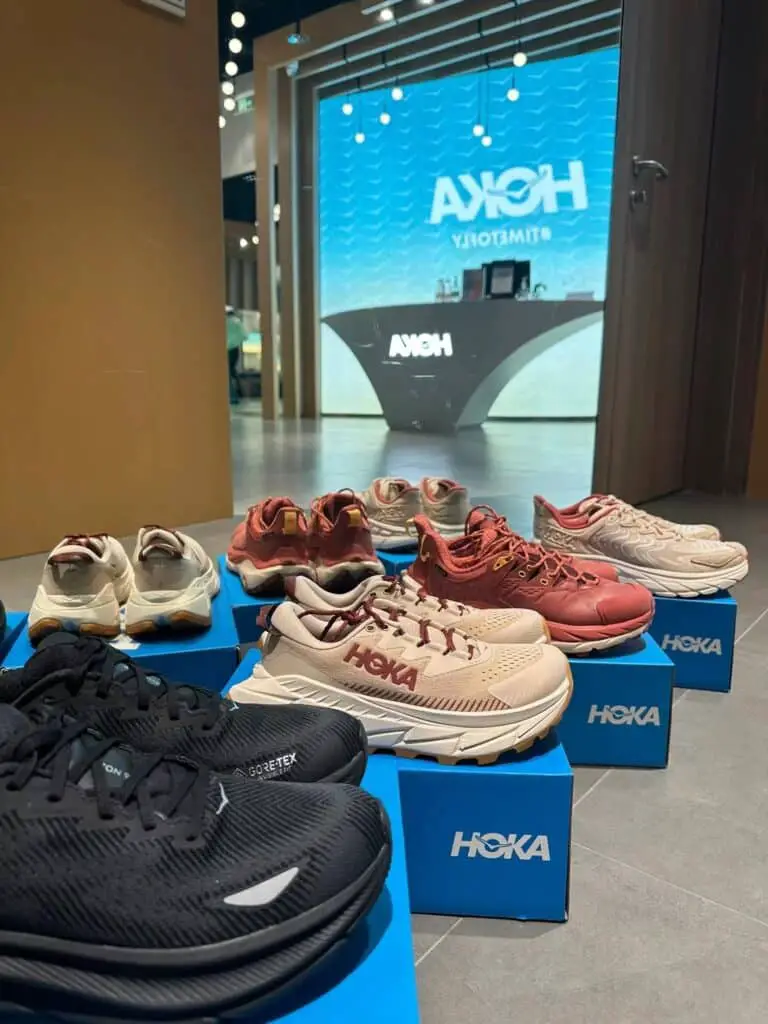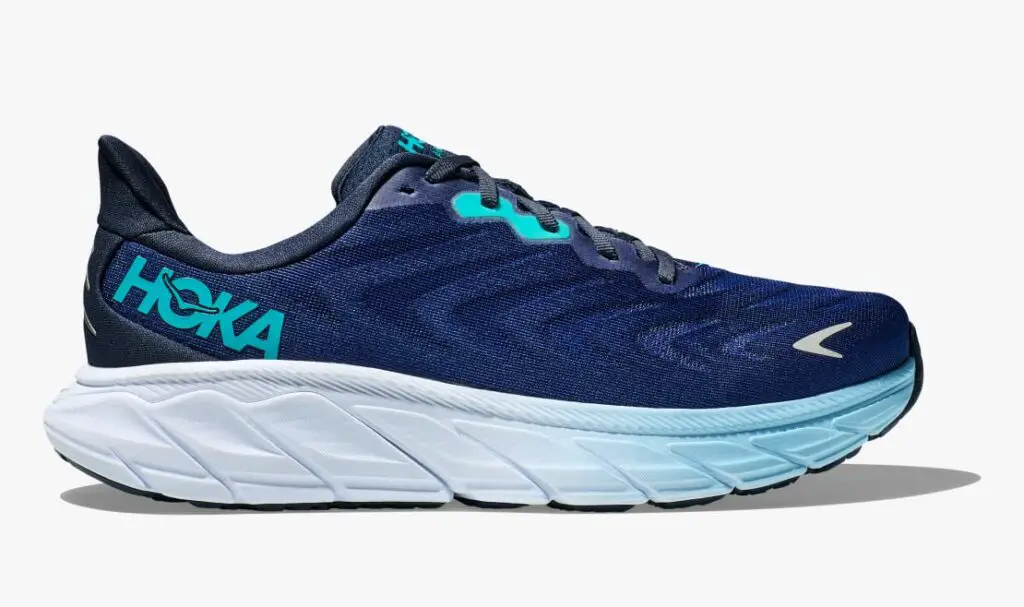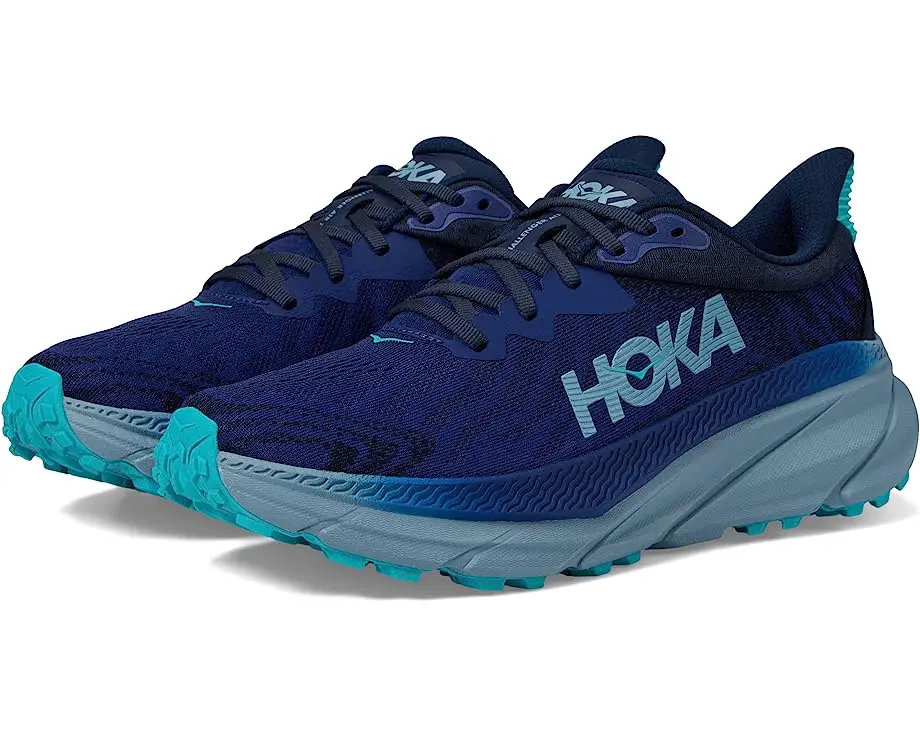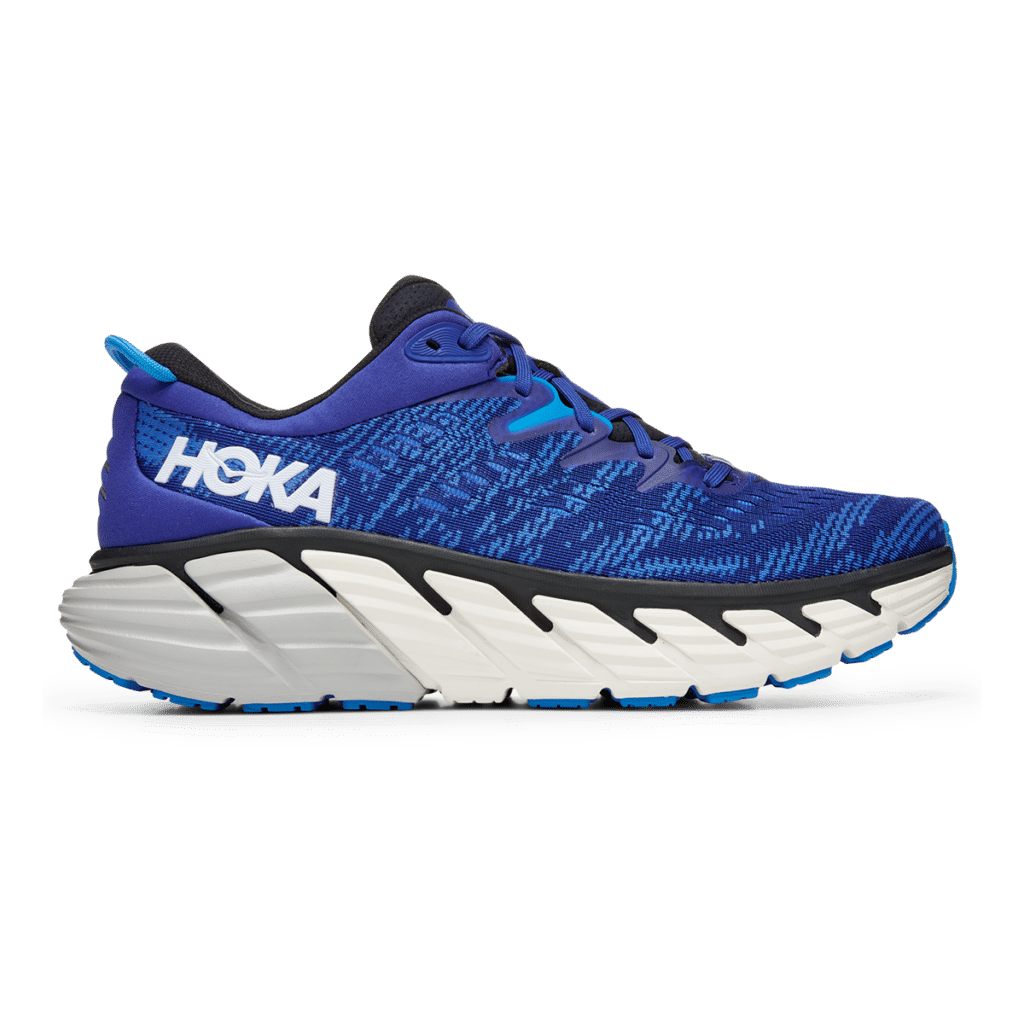Why are Hoka shoes so expensive? 6 key Reasons
Table of Contents
Has the release of the documentary ‘26.2 To Life’ made you jump to get your new Hoka shoes? I don’t doubt you. Despite being just 15 years old, Hoka has always been the talk of the town among his competitors.
But the biggest downside to these wonderful shoes is the price tag. On average, running shoes cost around $20 to $200. So, despite not being that old, why are Hoka shoes so expensive?
Hoka shoes are expensive because they are built with expense in mind. They bear up-to-date midsole technologies and materials that encourage all-day comfort, natural gait, and controlled running. The brand also employs an exceptional marketing strategy and carries the major brownie points for quality among its competitors, offering the same price.
Gym, sports, fashion week events, and workplaces. I see Hoka everywhere. This strong adaptability of Hoka is another major reason for their high demand and cost.
But should you still go for Hoka? And are they even worth it? Read on to know.
Why Are Hoka Shoes So Expensive on Amazon? 6 kEY Reasons
Do you know why most people shift buying from Amazon over original sites? It’s the lower price in comparison. I did the same and decided to buy my shoes from Amazon.
But when I switched to the ‘low price to high price’ filter on the site, the starting price wasn’t a pleasant surprise, around $130 for a normal Hoka model. And that’s very high compared to Nike’s lowest ($94) on the same platform. Founded in 2009 and adopted by Ugg’s owner, Deckers, in 2013, Hoka adds up to 36% of the total ROI of the parent company. Yup! Consistently breaking the bank with its billion-dollar sales.

So, why are Hoka shoes so expensive on Amazon? I believe the credit goes to its roots and innovative technology. Hoka shoes are built with high-quality and expensive materials (gel, rubber, foam) to fill in the space for premium stability and comfort. Despite the price tag, the midsole is thick enough to hold enough impact and persuade knee pain sufferers to buy them repeatedly.
The last thing that justifies their high-endness on Amazon is the reviews. Hoka shoes have outstanding ratings and reviews on Amazon. Let’s get to the details:

1. Hoka’s Proprietary Foam Midsole Technology
I prefer EVA-made over traditional ones because of the comfort when choosing a midsole.
As for Hoka, it’s popular for its proprietary foam midsole technology. Why? Because it promises high cushioning and maximum shock absorption in the long run. Hoka has 3 different types of technologies: cushioning, J-Frame™, and PROFLY™.
Stacked with dual density and cushioning (softer in the heel and firmer in the meta), the PROFLY™ midsole offers an extra impactful landing with a smoother toe-off. Now, a thin EVA foam costs around $35 on average. And since PROFLY is stacked with dual foam (around 33mm), imagine its total cost!
But on the brighter side, the same midsole ensures improved cushioning properties over time, regardless of the wear and tear. And it’s the durability and thickness that makes Hoka’s midsole better than traditional EVA foam.
The more stable the platform, the better the energy transfer and reduced fatigue during runs or gait activities. Talking about gait, the midsole is often supported with J-Frame technology. An intelligently designed feature that covers the foot’s medial side and the heels. I like how the frame is made with a firmer density foam that conforms to the foot in the shape of a ‘J’. This support helps your feet employ natural gait to combat overpronation.
The same J-frame is made of RMAT (blended rubber and EVA foam), and rubber costs around 1.52 USD per kg today! Even for regular cushioning, Hoka uses a special EVA foam. It is constructed through the compression molding technique, where the machine costs around $45000 per piece.
2. Advanced Upper Materials and Components
Hoka’s dedication to producing exceptional athletic footwear isn’t just limited to the midsole technology. I have always seen them using premium upper materials that let your feet breathe with performance.
Hoka uses lightweight and quick-drying knitted mesh for its upper. It not only reduces the overall weight of the shoe but also controls moisture. The breathable and lightweight mesh circulates air throughout the shoe, keeping the foot dry and cool even during intense workouts.
Despite being easily available, these premium materials are constructed differently and hence expensive. For instance, Hoka employs protective thermoplastic urethane (TPU) overlays. These overlays are strategically placed across high-wear areas to improve functionality and prevent wear on the outsole and toebox. The same TPU costs $1200 per ton. But the construction is what adds to the expense.
I found the shoes resilient and supportive even through the most challenging terrains. It also means that you will not have to replace your shoes very often, lasting you for a long time.
Secondly, Hoka uses removable molded OrthoLite insoles. These insoles contribute to plush underfoot cushioning and offer extra adaptability and support.
But it increases the production cost, making the shoes far more expensive.

3. Modern Design and Style
Have you ever seen a pair of Nike Air Max and UltraBoost? They almost look the same. Fortunately, this design boon is not found in Hoka, and I believe they have designs for everyone.
Unique designs, thin fabric, statement look, thick soles, and vibrant colors require skilled craftsmen to bring life to the art. And Hoka pays for it. According to glassdoor.com, Hoka gives its designers $75K – $110K per year on average, which is fairly the rate you would not expect from a high-end brand. But the company is also vouched for its excellent work environment, which I believe adds to the quality, too.
Hoka’s shoes are bold and embrace intelligence in design and style. The design philosophy emphasizes visual appeal, combining modern aesthetics with vibrant color palettes.
This approach makes these shoes an excellent choice for athletes who would like to opt for solid running shoes that are also visually appealing. However, since 70-90% of subconscious product judgment is based on color alone, you can easily answer why someone would pick Hoka over Nike Air Max now.
Hoka also pays attention to the shoe’s design details, including specialized overlays, branding elements, and intricate stitching. These complicated features require careful manufacturing processes, which may increase production costs compared to simpler shoe designs.
4. Limited Production Runs
A high demand requires a high production rate, which Hoka’s competitors, like Nike, take care of. Today, Nike has around 600 factories distributed in 46 countries. But comparatively, Hoka’s production houses are distributed in five countries.
I think it’s all because Hoka prioritizes innovation over mass production. This strategy leads to limited production runs. So, Hoka doesn’t enjoy the same amount of perks as bigger companies with more plants.
You might have noticed that Hoka debuts with limited articles every time it launches a model. While this might keep the supply low initially, it also keeps Hoka fans waiting. And that’s a smart approach for increasing the price point.
Hoka is very strict with its quality assurance, too. Every Hoka shoe undergoes rigorous testing and assessment before being sold out. Though the results promise quality assurance, it also requires the production to be completed within a limited timeframe.
This increases labor costs and slows the production process, leading to limited editions.

5. Brand Reputation and Marketing
Movies, celebrities, sports, and influencers. I’ve seen Hoka almost everywhere. Even the name Hoka One One means ‘fly over the earth’, denoting how the shoe is designed to give you the feel of flight.
Hoka’s tagline, Fly human fly, promises a cushioned ride and commitment to innovation. This promise is enough for running enthusiasts to turn their heads toward Hoka, regardless of the cost.
Hoka doesn’t believe in standard marketing. Instead, they are more focused on niche marketing, which means they only target runners.
For instance, in 2009, Hoka’s founder, Mermoud, signed a deal with the co-founder of Boulder Running Company (Mark Plaatjes) to test 770 Hoka pairs for a test run.
The focused marketing tactic appeals to the runners who believe in buying quality over quantity.
The brand also sponsors prominent athletes and races, essential for its marketing strategy. These branding strategies play a huge role in sustaining the brand image but need huge investments.
6. Ethical Considerations
One of the primary reasons why Hoka is one of the top favorite brands is its ethical considerations. As a buyer, I want to ensure my products don’t adversely affect the environment.
Hoka has launched some waste-reduction initiatives as targets. It also uses eco-friendly materials such as bio-based components and recycled fabrics to reduce greenhouse gas emissions. However, Hoka’s sustainability rating is rated as ‘not good enough’. Pages claim that Hoka has yet to meet this target and has no anti-deforestation policy.
Regardless of the doubt in showing complete sustainability, Hoka does claim to be so. As per studies, sustainable products are 75-85% more expensive than regular products.
Likewise, Hoka’s eco-friendly materials come at a premium price. Once made, you have to dispose of and recycle them via an even more advanced technology with higher costs.

Is HOKA owned by Nike?
No, Hoka has never been owned by Nike. In fact, in 1997, the brand joined brands like Adidas to beat Nike in coming first place. But soon, Adidas realized the potential of Hoka and became its first influencer.
Likewise, the brand was bought by Deckers in 2013, led by Nicolas Mermoud, an expert running and alpine skiing practitioner. Thanks to him, Hoka One One prioritized running performance and comfort in their design. It led to the production of premium features like CMEVA rubber for exceptional stability.
Why are Hoka shoes so popular?
Despite being popular since its inception, like its now-brother, Ugg, Hoka shoes were considered ugly among most people. But thanks to 2013, the brand found its luck when Deckers bought it for $1.1M!
Within ten years, Deckers’ exceptional marketing strategies and Hoka’s quality converted the revenue into $ 1 billion.
Product quality and marketing are the reasons for Hoka’s popularity. Like most other brands, Hoka took the Covid-19 pandemic as a chance to surge and make its mark. Through the launch of the Front Line Give Back Program, Hoka donated 5,000 pairs to healthcare workers.
And since the success of influencer marketing is based on genuine reviews, Hoka’s quality played an equal role.
Hoka’s cushioned kicks, speed control, and natural gait support have always won consistent positive feedback.
Where are Hoka shoes made?
Despite its roots in France, today, most Hoka One One shoes are made where most high-end brands are – in China and Vietnam, as per Deckers’ annual report 2022.
But, since coal is China’s dominant renewable energy source, Hoka shifted most of its houses to Vietnam to practice sustainability.
As per Deckers T1 Supply Chain Report 2023, Hoka has 1 footwear factory in China. But as stated earlier, comparatively, Hoka has more in Vietnam (around 5 exclusive footwear factories).
But it’s not just these two states; the same report shows that Hoka also has two manufacturing units in Cambodia. However, I found other pages unleashing Hoka manufacturing units in the Phillippines, Dominion Republic, and Indonesia. It is true for Deckers’ other brands like Ugg and Teva. But as per authentic evidence, Deckers is yet to unleash its manufacturing units for Hoka in these states.

How much more expensive is Hoka compared to major brands like Nike and Brooks?
Hoka is far more expensive than both Nike and Brooks. Yet, the price difference varies from vendor to vendor. On both Amazon and original sites, the starting price of Hoka One One shoes is higher than that of Brooks and Nike.
But in contrast to both, Hoka’s highest price is more or less close or lower than Nike and Brooks. So, this gives us a sign that Hoka just puts quality shoes, as a wide range in prices means a wide range of quality.
Here’s a table that summarizes the comparison:
| Brand | Original Price Range (USD) | Amazon Price Range (USD) |
| Hoka | $90 to $250 | $127 to $250 |
| Brooks | $75 to $250 | $44 to $1,220 |
| Nike | $70 to $275 | $94 to $1,980 |
Are Hoka shoes worth the money?
Personally, I think yes, they are. Let me break it down why.
Yes, because:
- They are made with high-quality modern materials and technologies that you won’t find in their competitors.
- The colors and designs are very ahead of their time and show clear differences, unlike Nike’s models.
- They are great for wearing all day, every day, and give a very controlled form of running.
- Newer models, like the Hoka Bondi 8, are even good for treadmills and give the easiest 5k miles, to be very honest.
- The stacked soles make them pretty durable.
- They offer a 30-day trial period (60 days for Hoka members). So, the return policy still makes them worth trying, even if you’re reluctant to spend on them.
Conclusion
I believe Hoka shoes aren’t just a fashion statement but are built with comfort in mind. The color variety it offers, the unique midsole technologies, and how it’s marketed all show why the shoes are so expensive now.
I think Hoka is still better than its competitors, offering an even higher price without variety and unique technologies.
And even if you aren’t okay with the price, the trial policy is still a great medium to uncover your personal views about the shoes.

In addition to my extensive coaching experience, I have spent over 10 years researching and testing various types of running shoes. I understand the importance of selecting the right shoe for each individual’s unique foot type, gait, and running style. I keep up-to-date with the latest shoe technology and have a comprehensive knowledge of the various brands and models available. Through my coaching and personal experience, I have helped runners find the perfect shoe to improve their comfort, performance, and overall running experience.